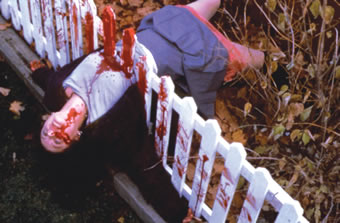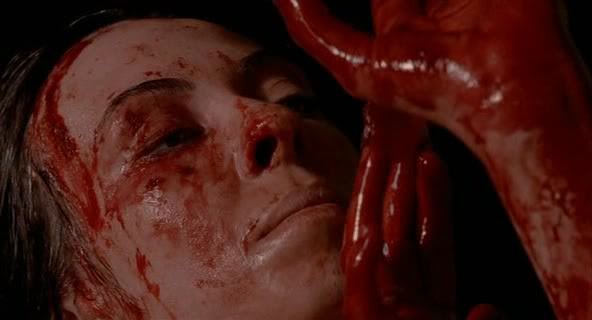We all have an idea in our minds of what constitutes the “Artist”: a tormented, misunderstood outsider, compelled by an almost otherworldly drive to create. We recall images like those of Vincent van Gogh’s famous self-portrait with bandaged head, concealing the wound that resulted from severing his own left ear, or we envision the distorted figure of Edvard Munch’s magnum opus The Scream, it’s creator checking himself into a private sanitarium later in life after hearing voices. While these biographical details of Van Gogh and Munch are true and verifiable, this notion of the Artist as a mad, tormented genius is a cultural construction originating from the 19th-century Romantics, as described by scholar Pamela Fletcher in her Victorian Studies text Rebels and Martyrs: The Image of the Artist in the Nineteenth Century:
[Michael] Wilson’s title essay traces the myth of the artist as a unique genius, alienated from society both by his own commitment to the demands of his art and a philistine public’s inability to value or understand it. Wilson rightly notes that the idea of the artist as a melancholic genius dates back to the Renaissance, but he locates the full flowering of the myth in the Romantic era. — excerpt from “Rebels and Martyrs: The Image of the Artist in the Nineteenth Century”, by Pamela M. Fletcher.
The Romantic era (approx. 1800-1850) reconfigured the artist as a tragic hero who, in the best case scenario, is a darkly brooding and cynical Byronic hero or, in the worst case, is a half-lunatic hermit who lives on the very fringe of society. Though most-assuredly a myth, this notion of the artist as a crazed — and possibly even dangerous — outsider has persisted even into the modern era.
The genre of horror is fed by our psychological and cultural fears. One of our collective fears is our fear of the Other: those individuals who, whether through a transgression of gender, physical deformity, or mental illness, deviate from the “norm” in terms of their appearance and/or behaviour. (See my previous series of posts on Deviance, gender and the ‘aberrant female’ in horror, which addresses the topic of women as the Other). These types of individuals tend to make the majority anxious, and therefore they are ideal to occupy the role of the “monster” in horror fiction. Given the Romantic notion of the “mad artist”, it’s hardly surprising that artists have served in this role of the feared Other in horror cinema. Below are a few examples of horror films that have featured visual artists in such roles.
1. Blind Beast (1969, dir. Yasuzô Masumura) is a masterpiece of ero guro nansensu from Japan that is based on a story by Edogawa Rampo. A blind sculptor kidnaps a beautiful young model and takes her back to his home to act as his model and muse. He and his mother live in a warehouse which he’s transformed into a surreal sculptural installation of giant body parts, dedicated mainly to the female form. At first, the model only wants to escape from this bizarre scene, but eventually she succumbs to his strange vision and even surpasses his obsession. In true ero guro style, they develop a curiously erotic, sadomasochistic relationship that eventually leads to the crazy, horrific and over-the-top violent finale. Below is the entire film posted on Youtube, though regrettably it lacks English subtitles. Worth watching, if only for its beautiful and bizarre visuals — such as the two protagonists cavorting atop a giant (foam rubber) sculpture of a reclining female nude.
2. As an artist myself, I can fully understand the urge to find the exactly correct hue for a project. On many occasions I’ve paid a princely sum for tubes of Cadmium Red paint because, well, no other pigment is as brilliantly, intensely red (the toxicity of the metal cadmium notwithstanding). Hershell Gordon Lewis, the notorious exploitation-film director who singlehandedly created the splatter-gore film, used this notion of the dangerously obsessive artist to splatter his signature gore in Color Me Blood Red (1965).
Artist Adam Sorge struggles to find critical and commercial success when he accidently discovers that blood smeared across his canvas provides his paintings with the vibrancy they previously lacked. This discovery provides the rationale for Sorge (and Lewis) to bloodily dispatch a couple of bikini-clad beauties in this lesser offering from Lewis’s “Blood Trilogy”. Low-budget and poorly acted (Lewis often relied on non-actors), what this film lacks in craft, it makes up for with its campy, rough-hewn B-movie charm. You can watch the entire, uncut film on Youtube. Considering that it was made in 1965, it truly is subversively gory.
3. Cauldron of Blood (1970) is a terrible film. That said, I kinda have a soft spot for it. Also known under the title Blind Man’s Bluff, it was cobbled together over a few years, repurposing footage from different films. One reason for this cinematic mess is the fact that its star Boris Karloff was in very poor health, and couldn’t appear in a number of scenes (he died in 1969, before its release). Thus, its creators were obliged to pad the film with previously shot footage. Karloff appears frail and sadly diminished — but even a diminished Karloff is still pretty good. Here’s the short synopsis from IMDB: “A blind sculptor works on his magnum opus unaware that the skeletons he has been using for armatures are the remains of the victims of his evil wife and that he is the next target”.
Again, the entire film is available on Youtube (one assumes distribution companies don’t care about these older films). My advice is to forward to the 1:27 mark and watch the final showdown between Karloff and his gloriously evil wife, where she meets her comeuppance in a vat of acid.


















